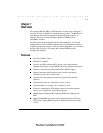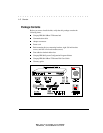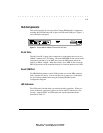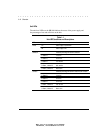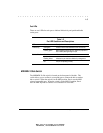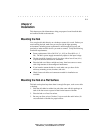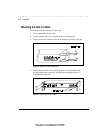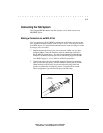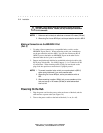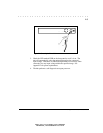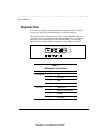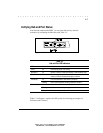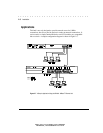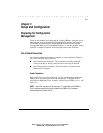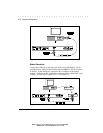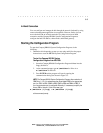
. . . . . . . . . . . . . . . . . . . . . . . . . . . . . .
2-4
Installation
Writer:
Weldon W. Rowan
Project:
Installation
Comments:
File Name:
SAB_2.DOC
Last Saved On:
7/2/98 8:49 AM
WARNING:
Do not plug a phone jack connector into any RJ-45 port.
This may damage the hub. Instead, use only twisted-pair cables with
RJ-45 connectors
.
NOTES:
1. Make sure each twisted-pair cable does not exceed 100 meters (328 feet)
2. When using Port 4 as an MDI-X port, set the port selection switch to MDI-X
Making a Connection via the MDI/MDI-X Port
(Port 4)
1. To make a direct connection to a compatible hub or switch, use the
MDI/MDI-X port (Port 4). When connecting to this port, remember to
set the port selection switch to MDI. You can also connect any RJ-45
(MDI-X) port on the hub to an MDI/MDI-X port on the other device
when the other device’s port is set to MDI.
2. Prepare straight-through shielded or unshielded twisted-pair cables with
RJ-45 plugs at both ends. Use 100Ω Category 3, 4, or 5 cable for all RJ-
45 connections. When inserting an RJ-45 plug, be sure the tab on the
plug clicks into position to ensure that it is properly seated.
NOTES:
1. To connect to another hub or switch, you may also attach to (MDI-X)
station ports at both ends if you use a crossover cable.
2. When using Port 4 as an MDI port, set the port selection switch to
MDI.
3. When connecting to another 10Mb/s hub, you can cascade up to four
hubs, and use up to 100 meters (328 feet) of cable between each
inter-hub link.
Powering On the Hub
1. Plug the power cord into the power socket at the rear of the hub, and the
other end into a power outlet (see Figure 2-4).
2. Turn on the power switch on the back of the hub ( I = on; 0 = off).



